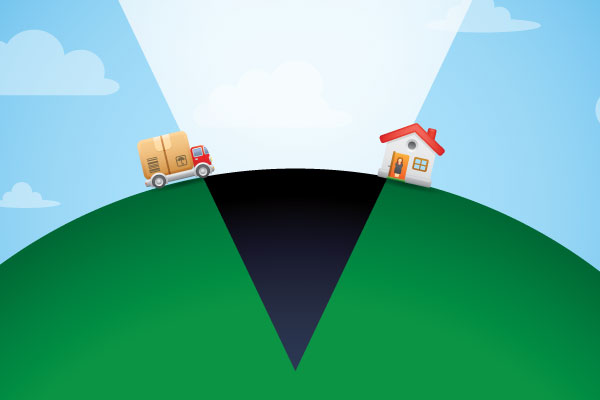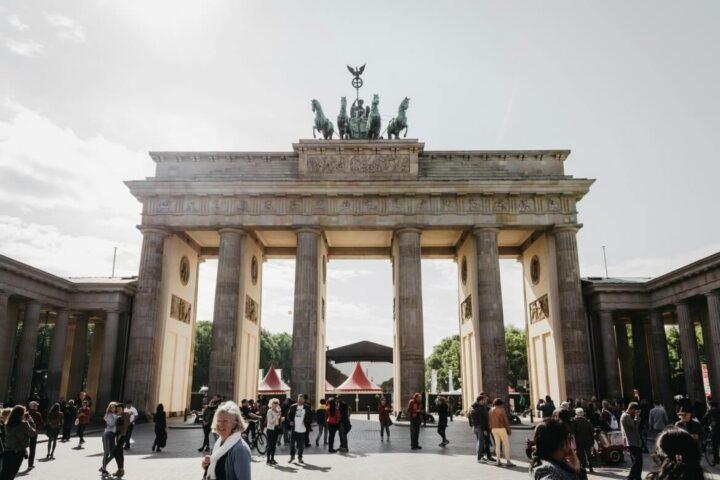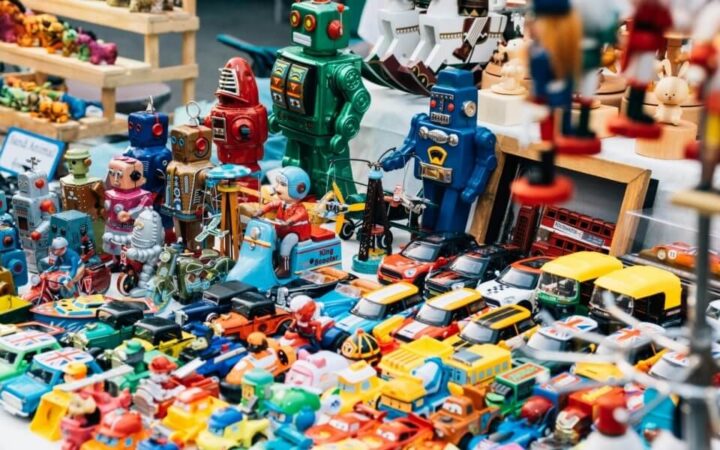What you need to know about last mile in e-commerce
Written by
Editorial TeamPublished on
What are the critical aspects of last mile delivery in e-commerce? Gain knowledge on strategies to improve efficiency and meet customer expectations.

The “last mile” in e-commerce is a critical stage in the supply chain, referring to the final step of delivering a product to the customer. It’s where the journey ends, but for businesses, it’s often where some of the biggest opportunities begin.
With the surge in online shopping, customers increasingly demand fast, reliable, and often free delivery. At the same time, businesses face logistical hurdles such as traffic congestion, complex urban infrastructure, and the growing pressure to adopt sustainable delivery practices.
In this article, we’ll break down the key aspects of last-mile delivery. Let’s explore emerging trends and strategies businesses are using to stay ahead in this space!
What is the last mile in e-commerce
Last mile logistics is a terminology used to define the movement of goods from a transportation hub to the final delivery destination.
It is the last leg of supply chain management, which ensures that goods brought into a warehouse are adequately packaged and sent directly to the customer.
Here are the numbers.
The global last-mile delivery market was valued at approximately $146.81 billion in 2023 and is projected to reach $340.56 billion by 2032, with a compound annual growth rate (CAGR) of 9.8% from 2024 to 2032.
Another source says that the global last-mile delivery market size was estimated at $165954.2 million. Here, Europe accounts for over 30% of the global revenue, amounting to approximately $49.79 billion.
Going further, the last mile is one of the most carbon-intensive phases of e-commerce fulfillment due to repeated stopping, idling, and traffic congestion. So, many pros here.
But, this type of delivery is faced with two main challenges: price and speed.
- Only 44% of consumers are willing to wait only two days for their orders. They want their goods to be delivered to their home within the shortest possible timeframe.
- Approximately 41% of consumers are open to paying extra for same-day delivery services. Notably, 24% are willing to pay more for a specific one- or two-hour delivery window, underscoring the value placed on expedited and precise delivery times.
- A substantial portion of online shoppers prioritize cost over speed. In a recent survey, 44% of respondents indicated a preference for lower-cost deliveries, even if it means longer delivery times.
How are companies dealing with it? 2025 trends!

So many expectations. But how do companies manage them?
In 2025, companies are actively addressing the challenges of last-mile delivery to meet rising consumer expectations. Here’s how they’re doing it:
Urban Warehousing and Micro-Fulfillment Centers
To expedite deliveries, businesses are shifting logistics operations back to urban areas, especially micro-fulfillment centers. By establishing micro-fulfillment centers closer to customers, they can reduce delivery times and enhance efficiency.
On-Demand and Crowdsourced Delivery Services
Retailers are increasingly utilizing on-demand and crowdsourced delivery platforms to manage peak periods and offer flexible delivery options. This approach allows them to scale delivery capacity without the overhead of maintaining large fleets.
Autonomous Delivery Solutions
The adoption of autonomous delivery robots (ADRs) is on the rise. Innovations like drones and autonomous vehicles are making significant strides in the last-mile delivery sector. They offer efficient solutions for quicker deliveries.
These robots navigate complex urban environments to deliver goods efficiently. The global ADR market is projected to reach $3.89 billion by 2030!
Sustainable Delivery Practices
With a growing emphasis on sustainability, companies are investing in electric vehicles and exploring eco-friendly delivery methods to reduce their carbon footprint. Developments such as logistics microcenters, optimized route planning using artificial intelligence, and electric delivery vehicles are set to become more common.
Top strategies
Knowing the top trend for 2025, let’s examine the exact strategies that your business can take to approach last-mile delivery in the right way!
Use advanced delivery automation tools to streamline operations and reduce delays
Example: Instead of relying on manual tracking or scheduling, choose AI-powered platforms for delivery management.
Automation tools optimize routing, predict traffic patterns, allocate resources dynamically, and just allow for precise, efficient deliveries. These systems also integrate with inventory and warehouse management, ensuring items are picked, packed, and dispatched without errors. By using automation, your business improves delivery speed and reduces operational costs and manual labor.
💡 Now, since consumers demand accuracy and quick turnarounds, this strategy is essential for maintaining competitiveness.
Partner with localized third-party logistics (3PL) providers to expand delivery coverage
Example: Instead of maintaining your own fleet in every region, choose partnerships with local 3PL providers.
Search for localized 3PL providers. They have established infrastructure and expertise in specific regions, allowing your business to penetrate new markets without the upfront costs of setting up your own network. This is particularly effective for rural or hard-to-reach areas where delivery demand fluctuates.
💡 This strategy reduces delivery times and ensures customers in underserved areas receive the same quality of service as urban buyers.
Adopt multi-hub delivery networks to reduce delivery distances
Example: Instead of relying on a single central warehouse, choose a network of smaller hubs closer to customer hotspots.
Multi-hub networks, often supported by micro-fulfillment centers, shorten the distance between your inventory and your customers, enabling same-day or even same-hour deliveries. And, well, this system reduces transportation costs – but it also minimizes delivery times, meeting the growing expectation for instant gratification.
💡 Retailers like IKEA have successfully used this approach, positioning them as leaders in last-mile efficiency.
Leverage crowdsourced delivery models to scale during demand peaks and introduce precise delivery time slots
Example: Instead of hiring temporary drivers, choose crowdsourced platforms like Bringg to handle overflow orders during peak periods.
Crowdsourced models allow you to scale your delivery network quickly without committing to the overhead of maintaining a large permanent fleet. These platforms offer a flexible, on-demand solution to manage seasonal spikes, like holiday shopping periods or promotional events.
Example 2: Instead of offering vague delivery windows like “between 9 AM and 5 PM,” these platforms will allow customers to select narrow time slots.
Precise time slots cater to modern consumers who value convenience and control over their schedules. This approach reduces missed deliveries and rescheduling costs while building trust and loyalty.
💡Offer this flexibility, and you will set your brand apart as customer-centric in a highly competitive market.
Implement modular packaging solutions to reduce shipping inefficiencies
Example: Instead of using generic box sizes for all orders, choose customizable packaging systems.
Modular packaging minimizes wasted space, allowing for more efficient use of delivery vehicles. This reduces shipping costs and aligns with sustainability goals by cutting down on excess materials. 💡With consumers increasingly favoring eco-friendly practices, this strategy boosts your operational efficiency while appealing to environmentally conscious buyers.
Last-mile logistics: in Amazon’s way
A key component of Amazon‘s approach is the deployment of electric delivery vehicles (EDVs). Collaborating with manufacturers like Rivian, Amazon has introduced a fleet of EDVs designed to reduce carbon emissions and operational costs. By mid-2023, Amazon had over 5,000 Rivian EDVs in operation, contributing to its goal of achieving net-zero carbon emissions by 2040.
To further streamline deliveries, Amazon has implemented Vision Assisted Package Retrieval (VAPR) technology in its delivery vans. This system uses spotlights to highlight packages designated for each stop, enabling drivers to quickly identify and retrieve items without manually checking labels. The VAPR system will be installed in 1,000 delivery vans.
Additionally, Amazon is exploring the use of smart glasses to assist delivery drivers. These glasses are designed to provide real-time navigation cues and facilitate hands-free package scanning, thereby improving delivery accuracy and speed.
See? Amazon will crush it in 2025 with last-mile delivery. Electric vans, smart glasses, cool tech – it’s all about getting stuff to your door faster and cleaner.
Summary
With the increase in the use of technology, there is a more significant opportunity for delivery companies to meet the needs of their customers. It is expected that in the next 10 to 15 years, there will be some huge changes in the industry.
Delivery companies should focus on ways to enhance their delivery alternatives, in order to administer and guarantee exceptional service levels to their customers.
***


